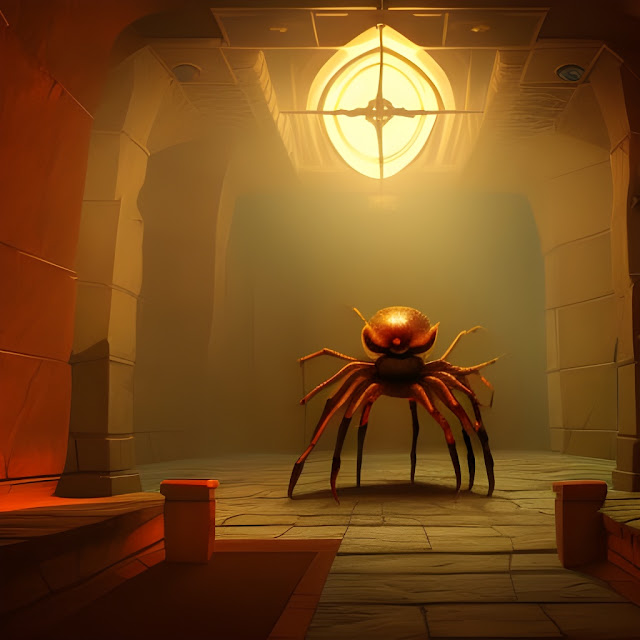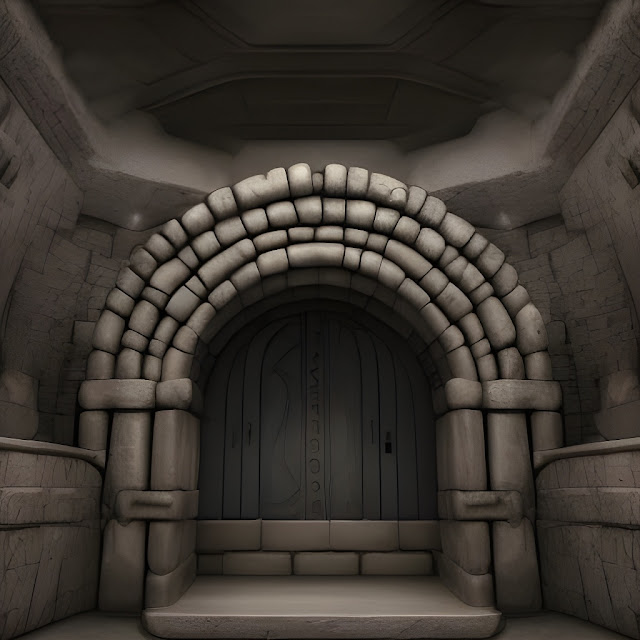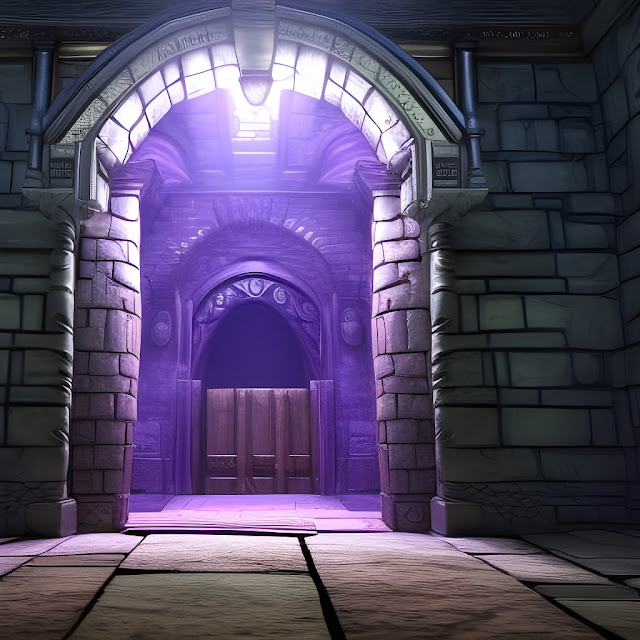
The influence of author Fritz Leiber and his tales of the adventures of Fafhrd and the Gray Mouser on fantasy roleplaying are undeniable. Of course, they introduced the reader to the world of Nehwon and the city of Lankhmar, also known as the City of the Black Toga, an urban jungle rife with cutpurses and corruption, guilds and graft, temples and trouble, whores and wonders, and more. Sitting on the Inner Sea, it is the greatest city in Nehwon, over which hangs the pall from fire pits, charnel houses, chimneys, and smoke houses, which when combined with the fog which rolls of the Hlal river, turns into a dense smog, the bane of the city’s brown-armoured city watch, and much to the delight of the city’s many thieves, pickpockets, burglars, cutpurses, muggers, and anyone else who would skulk in the night! Not for nothing is Lankhmar called the City of Sevenscore Thousand Smokes. Yet the stories of Fafhrd and the Gray Mouser also introduced the concept of urban adventures to the hobby and added both the concept of the thieves’ guild and the assassins’ guild to
Dungeons & Dragons, as well as influencing the look and feel of numerous fantasy cities in roleplaying. It is no wonder that their world has been visited by roleplaying not once, but six times!
TSR, Inc. first included the Nehwon mythos, its gods and various characters to
Advanced Dungeons & Dragons, First Edition in 1980 with
Deities & Demigods, before publishing
Lankhmar – City of Adventure in 1985. This would be followed by
The New Adventures of Fafhrd and Gray Mouser boxed set for
Advanced Dungeons & Dragons, Second Edition in 1996. Mongoose Publishing’s
Lankhmar, published in 2006, was written for use with
RuneQuest, whilst
Lankhmar: City of Thieves, published in 2015 by Pinnacle Entertainment Group, was written for use with
Savage Worlds. The sixth and most recent version is
Dungeon Crawl Classics Lankhmar, published by
Goodman Games following a successful
Kickstarter campaign, for use with the
Dungeon Crawl Classics Role Playing Game. It is designed to help the
Dungeon Crawl Classics Judge run swords and sorcery urban-set campaigns of semi-heroic adventure charting the ups and downs, successes and failures, triumphs and travails of a band of ne’er-do-wells, who will break into homes in the Rich Men’s Quarter and sneak into the temples on the Street of the Gods, run the ‘rooftop road’ to avoid the city watch, fence their stolen goods at the back of the Plaza of Dark Delights, before frittering away their ill-gotten gains by carousing and gambling early into the morning. Then with a heavy hangover, they will probably have to lie low for a week or two as the city watch searches high and low for them. Of course, those particular ne’er-do-wells may not be responsible for the crime that the city watch wants them for, but lie low long enough or bribe the right person, and with pockets empty of coin and stomachs rumbling, they are back out on the streets looking for the next score.
The
Dungeon Crawl Classics Lankhmar Boxed Set is a handsome affair, filled to the brim with books and maps. This includes ‘The Judge’s Guide to Nehwon’, ‘Compendium of Secret Knowledge’, ‘Lankhmar: City of the Black Toga’, and ‘Dungeon Crawl Classics Lankhmar #0: No Small Crimes in Lankhmar’, plus a 33” × 17” poster map of the City of Lankhmar, 17” × 22” map of Nehwon, and a Judges’ Screen specifically for
Dungeon Crawl Classics Lankhmar. As well as describing both the world of Nehwon and the city of Lankhmar,
Dungeon Crawl Classics Lankhmar includes stats for the notable characters from Fritz Lieber’s stories, details of the setting’s gods, new magic, and beasts, rules for creating and playing Player Characters—who are heroes rather than cheesemakers or gongfarmers trying to escape their dull lives, and this being for the
Dungeon Crawl Classics Roleplaying Game, table after table to help the Judge create exciting, interesting things and NPCs for those Player Characters to encounter and do, and so bring her Lankhmar to life. The
Dungeon Crawl Classics Lankhmar Boxed Set is not designed as a definitive or comprehensive guide to the city and inhabitants, but rather as a combination of guide and toolkit for the Judge. The result will be a campaign that is fundamentally different to a typical Dungeon Crawl Classics campaign—darker, city-based, heroic, and adult in tone.
At one-hundred-and-four pages, ‘The Judge’s Guide to Nehwon’ is the longest book in the
Dungeon Crawl Classics Lankhmar Boxed Set. When you discover that a lot of those pages consist of spells particular to Lankhmar and you realise just how detailed each spell in Dungeon Crawl Classics actually is, and that ‘The Judge’s Guide to Nehwon’ also details the effects of invoking various patron gods and the possible taints that a Player Character might suffer in poorly invoking said patron gods, then it turns out that ‘The Judge’s Guide to Nehwon’ is actually not that long a book, or least not that dense. ‘The Judge’s Guide to Nehwon’ introduces the setting and the fiction it is based upon, describing in turn the various countries and locations surrounding Lankhmar, the cultures of the Inner Sea and beyond, languages and gods, and more. Some of the cultures do feel like clichés by modern standards—the nomadic horse-riding Mingols who hail from the Steppes, the barbarian Northerners feared as pirate raiders, the Kleshites of the Jungle of Klesh who trade in slaves, and so on—but bear in mind that the stories that
Dungeon Crawl Classics Lankhmar is based upon are over fifty years old and this is the swords & sorcery genre. Nevertheless, the Judge may want to be circumspect when dealing with this aspect of the setting.
There are details of Nehwonian alcoholic drinks too, such as the Bubbly Wine of Ilthmar, Ool Hruspian Old Wine, and the notorious Mushroom Wine which can grant the imbiber certain benefits or drive him to madness. These nicely tie in with the rules for recovering Luck in through carousing, later in ‘The Judge’s Guide to Nehwon’, which mostly involve a Player Character spending an evening in the bars and taverns of the city, getting drunk, and suffering the consequences. ‘The Judge’s Guide to Nehwon’ also provides a range of new spells for the setting, such as
Confounding Glamour, which makes the caster difficult to detect, or
Mouse’s Painful Suffering, which enables the cast to inflict suffering on another using a doll or fetish. These are not readily available to the Player Characters, and any wizard wanting to learn them will have to track down the right tome or scroll, or find someone who can teach it to him. All Player Characters in
Dungeon Crawl Classics Lankhmar can be agents and servants to patrons such as the gods. Those who enter into simple agreements become agents, whereas those who enter into magical compacts become servants, much like the Patron bond spell in Dungeon Crawl Classics, and in return, a Player Character can receive certain benefits. The patrons are of course the watchful gods of Lankhmar and Nehwon, including Ningauble of the Seven Eyes, Mog the Spider God, Issek of the Jug, and others, and as well as their possible debts and boons, there are tasks which they can set those who have taken their patronage. The patrons are excellent tools for the Judge to use to drive adventures and bring the setting’s mystical elements into play.
‘The Judge’s Guide to Nehwon’ provides new rules and adjustments for a
Dungeon Crawl Classics Lankhmar campaign. This includes the aforementioned Carousing rules for recovering Luck and also Laying Low, including complications associated with both, plus a list of magical items and a bestiary. There is also advice on running urban-set campaigns, which highlight in particular how different such a campaign will be from a standard
Dungeon Crawl Classics campaign. This is to primarily run a campaign as an urban sandbox, to have the Player Characters face and hopefully escape the consequences of their actions, with almost everything they do having repercussions—good or bad. Burglarise a jewelry shop and the Player Characters and possibly whomever hired them, will be rich, but the city watch will be after the Player Characters, as will the Thieves’ Guild, who the jewelry shop owner was paying protection money, and then if the person who hired them to do the job turns up dead and the loot nowhere to be seen, who are the primary suspects? What the guidance highlights is that in a
Dungeon Crawl Classics Lankhmar campaign, the Player Characters are not going to be comfortable, going from weird dungeon to the next. Instead, they will often be hungry or hunted, forced to rely on each other as well as their wits and their contacts—who in turn may come to rely on the Player Characters at a later date. Consequently, a
Dungeon Crawl Classics Lankhmar campaign will often be more player-driven and have an occasional narrative focus as time passes, so is not as straightforward to run.
One big difference between
Dungeon Crawl Classics Lankhmar and standard
Dungeon Crawl Classics is the lack of a Funnel. This is a standard feature of
Dungeon Crawl Classics, a scenario specifically designed for Zero Level Player Characters in which initially, a player is expected to roll up three or four Level Zero characters and have them play through a generally nasty, deadly adventure, which surviving will prove a challenge. Those that do survive receive enough Experience Points to advance to First Level and gain all of the advantages of their Class. Instead of a Funnel,
Dungeon Crawl Classics Lankhmar provides the Meet, the moment or adventure when the Player Characters all met for the first time, as First Level—rather than Zero Level—characters, just as in the Fafhrd and the Gray Mouser story, ‘ Ill Met in Lankhmar’. Annoyingly the Meet is mentioned before the explanation, so at first the Judge is left to wonder what it is, but the Meet is designed to get a party together, have its members make contacts, and lastly, provide its members with an opportunity to learn more about the world, if not Lankhmar, then at least the neighbourhood. Overall, the advice is excellent and will very much help the Judge make the switch to a Lankhmar-set campaign. Lastly, ‘The Judge’s Guide to Nehwon’ does address the issue of where Fafhrd and the Gray Mouser are during the Player Characters’ adventures with several options, but really their presence should not have that much of an impact.
The second book, ‘Lankhmar: City of the Black Toga’, runs to forty-four pages and is the
Dungeon Crawl Classics Lankhmar Boxed Set gazetteer. It is a more straightforward book covering the history, government, powers, guilds, crime and punishment, known Overlords of the city during the time of Fafhrd and the Gray Mouser, and more. Its exploration of the various neighbourhoods or quarters of the city, such as the Temple Quarter and Crafts Quarter, are supported by descriptions of places of interest, like the Forbidden Temples in the Temple Quarter, the Thieves’ House in the Crafts Quarter, the Plaza of Dark Delights in the Plaza Quarter, and so on, are backed up with tables of interesting events, random noble tables, curious people found in the Rich Men’s Quarter, and others that the Judge can use to create events and plots, perhaps chaining them together to pull the Player Characters across the city. Other tables enable a Judge to create and populate a neighbourhood, perhaps as a starting point or base for the Player Characters, and there is a table of adventure seeds too.
The third book in
Dungeon Crawl Classics Lankhmar Boxed Set is the forty-page ‘Compendium of Secret Knowledge’ and is the book for the Player Characters. As well as being urban-set and using the Meet to introduce Player Characters rather than the Funnel,
Dungeon Crawl Classics Lankhmar is a humancentric setting. What this means is that there are no Dwarves, Elves, or Halflings. There are also no Clerics as a Class. This is because any character can enter into a relationship with a god and take him as a patron—even multiple gods—and gain the benefits and drawbacks of doing so. This limits the Classes to just Thief, Warrior, and Wizard, who are all rogues and in play work together as a gang rather than a party. Player Characters begin play at First Level, have more Hit Points, and have a Doom and a Benison. These replace Birth Augurs from
Dungeon Crawl Classics and are derived from a Player Character’s origins rather than the sign under which he was born. Sample Boons include Accepted Freelance Thief, Former Wizard’s Pupil, or Mingol Bow, whilst sample Dooms include Bad Reputation in Certain Circles, Illiterate, or Superstitious. It is possible to have an extra Benison, but this costs permanent points of Luck and an extra Doom. Overall, the effect is make the Player Character a more heroic figure, but not that much more heroic!
There are other changes to the rules of Dungeon Crawl Classics too, such as whether or not to retain Alignment, but that is only a minor change. The changes to magic and healing are not so. Nehwon is considered a ‘low magic” world and does not allow for the mercurial magic of standard Dungeon Crawl Classics, so magic takes more effort or has condition to being cast, such as the caster only being to cast spells indoor without a penalty or requiring a large boiling cauldron filled with odd ingredients to be able to cast successfully. In addition to a big table of Spell Stipulations, there tables for spell corruption, which go from minor to greater via major, reflecting the mutative effect of casting more powerful spells. Other options for a Wizard include Black and White magic, divided by spell type and casters of White inflicting less damage versus casters of Black magic suffering more corruption. Without the presence of Clerics, the Player Characters will need to find other means of healing. Some Patrons provide healing, but in the main, the Player Characters will have to obtain ointments, unctions, unguents, and other restoratives, although the Judge is provided other options too. This includes Cinematic healing for an even more heroic style of play. Lastly,
Dungeon Crawl Classics Lankhmar adds ‘Fleeting Luck’, reflecting the capricious nature of Nehwon’s gods, which can come and go through play, gained for rolling a natural twenty, pulling off an amazing stunt, or roleplaying, but lost when any player rolls a one. This will give play an entertaining ebb and flow, but potentially even more fun is the optional ‘Banter’ rule, in which a Banter token passes back and forth between the players as they roleplay their characters trading quips and barbs. Whoever has the token can trade it in to gain Luck points for his character’s next role or affect another character’s or NPC’s roll, but after that, the token goes back to the Judge until the quips and barbs begin flying again. For the right group, this really rewards their roleplaying and turns play into a buddy style caper.
The last book in the
Dungeon Crawl Classics Lankhmar Boxed Set is ‘Dungeon Crawl Classics Lankhmar #0: No Small Crimes in Lankhmar’. At just twelve pages, this is also the shortest book, providing a first adventure for First Level Player Characters. It is designed to be run after they have met as part of their Meet adventure, which given that the
Dungeon Crawl Classics Lankhmar Boxed Set is designed to introduce the setting and provide the Judge with everything necessary to run a campaign, to include an adventure set after the Meet rather than a Meet adventure itself seems like a major omission. However, there is advice on how to run it as a Meet, but another given option is to play
Dungeon Crawl Classics Lankhmar: Masks of Lankhmar, which specifically designed to be run as a Meet, and then run ‘Dungeon Crawl Classics Lankhmar #0: No Small Crimes in Lankhmar’. Inspired by both
The Swords of Lankhmar and
The Incredible Shrinking Man, the scenario begins with the Player Characters breaking into a long-abandoned home, rumoured to contain a cache of gold, and suffering a curse—being shrunk down to the size of rats! The Player Characters must brave the dangers of their newly enlarged world in search of a means to lift the curse and restore themselves to full size, all whilst being stalked by a cat! The change of scale makes this adventure both memorable and deadly, but with care and luck, the Player Characters should be able to survive and discover a secret or two about Lankhmar. This a pleasingly inventive scenario and fun to play.
In addition to the four books, the
Dungeon Crawl Classics Lankhmar comes with two maps. One is a full colour poster map of Lankhmar, the other a black and white map of Nehwon. Both are attractive and useful. Similarly useful is the Judges’ Screen, which includes several of the tables found in the various books in the
Dungeon Crawl Classics Lankhmar Boxed Set. Of course, those books include a lot more tables and the Judge will need to consult those during play. Lastly, a copy of Goodman Games Gazette, the latest issue of which is included with each new Kickstarter. This issue has an interview with Michael Curtis, the designer of the
Dungeon Crawl Classics Lankhmar Boxed Set, as well as extra content, meaning that it very nicely complements the rest of the box.
Physically, the
Dungeon Crawl Classics Lankhmar Boxed Set is very well produced and everything crammed into the box is too. The books are all well-written, the art is decent, and the maps nicely done too. The books are in black and white, which is not standard today, but it fits the style of
Dungeon Crawl Classics.
The
Dungeon Crawl Classics Lankhmar Boxed Set is a thoroughly impressive, boxed set. It has everything to get a Lankhmar-based campaign started and whilst it is not a definitive guide to the world of Nehwon and the City of Lankhmar, it is a definitive guide for the Judge to run a campaign set there. It not only provides her with the background, the tools, and the options she needs to do so, but also the advice to make the switch to doing so. For the Judge who wants to run a grim and gritty, yet heroic Swords & Sorcery campaign on the streets of the greatest city in the world,
Dungeon Crawl Classics Lankhmar Boxed Set is perfect.
 On the tail of Old School Renaissance has come another movement—the rise of the fanzine. Although the fanzine—a nonprofessional and nonofficial publication produced by fans of a particular cultural phenomenon, got its start in Science Fiction fandom, in the gaming hobby it first started with Chess and Diplomacy fanzines before finding fertile ground in the roleplaying hobby in the 1970s. Here these amateurish publications allowed the hobby a public space for two things. First, they were somewhere that the hobby could voice opinions and ideas that lay outside those of a game’s publisher. Second, in the Golden Age of roleplaying when the Dungeon Masters were expected to create their own settings and adventures, they also provided a rough and ready source of support for the game of your choice. Many also served as vehicles for the fanzine editor’s house campaign and thus they showed another Dungeon Master and group played said game. This would often change over time if a fanzine accepted submissions. Initially, fanzines were primarily dedicated to the big three RPGs of the 1970s—Dungeons & Dragons, RuneQuest, and Traveller—but fanzines have appeared dedicated to other RPGs since, some of which helped keep a game popular in the face of no official support.
On the tail of Old School Renaissance has come another movement—the rise of the fanzine. Although the fanzine—a nonprofessional and nonofficial publication produced by fans of a particular cultural phenomenon, got its start in Science Fiction fandom, in the gaming hobby it first started with Chess and Diplomacy fanzines before finding fertile ground in the roleplaying hobby in the 1970s. Here these amateurish publications allowed the hobby a public space for two things. First, they were somewhere that the hobby could voice opinions and ideas that lay outside those of a game’s publisher. Second, in the Golden Age of roleplaying when the Dungeon Masters were expected to create their own settings and adventures, they also provided a rough and ready source of support for the game of your choice. Many also served as vehicles for the fanzine editor’s house campaign and thus they showed another Dungeon Master and group played said game. This would often change over time if a fanzine accepted submissions. Initially, fanzines were primarily dedicated to the big three RPGs of the 1970s—Dungeons & Dragons, RuneQuest, and Traveller—but fanzines have appeared dedicated to other RPGs since, some of which helped keep a game popular in the face of no official support.



















